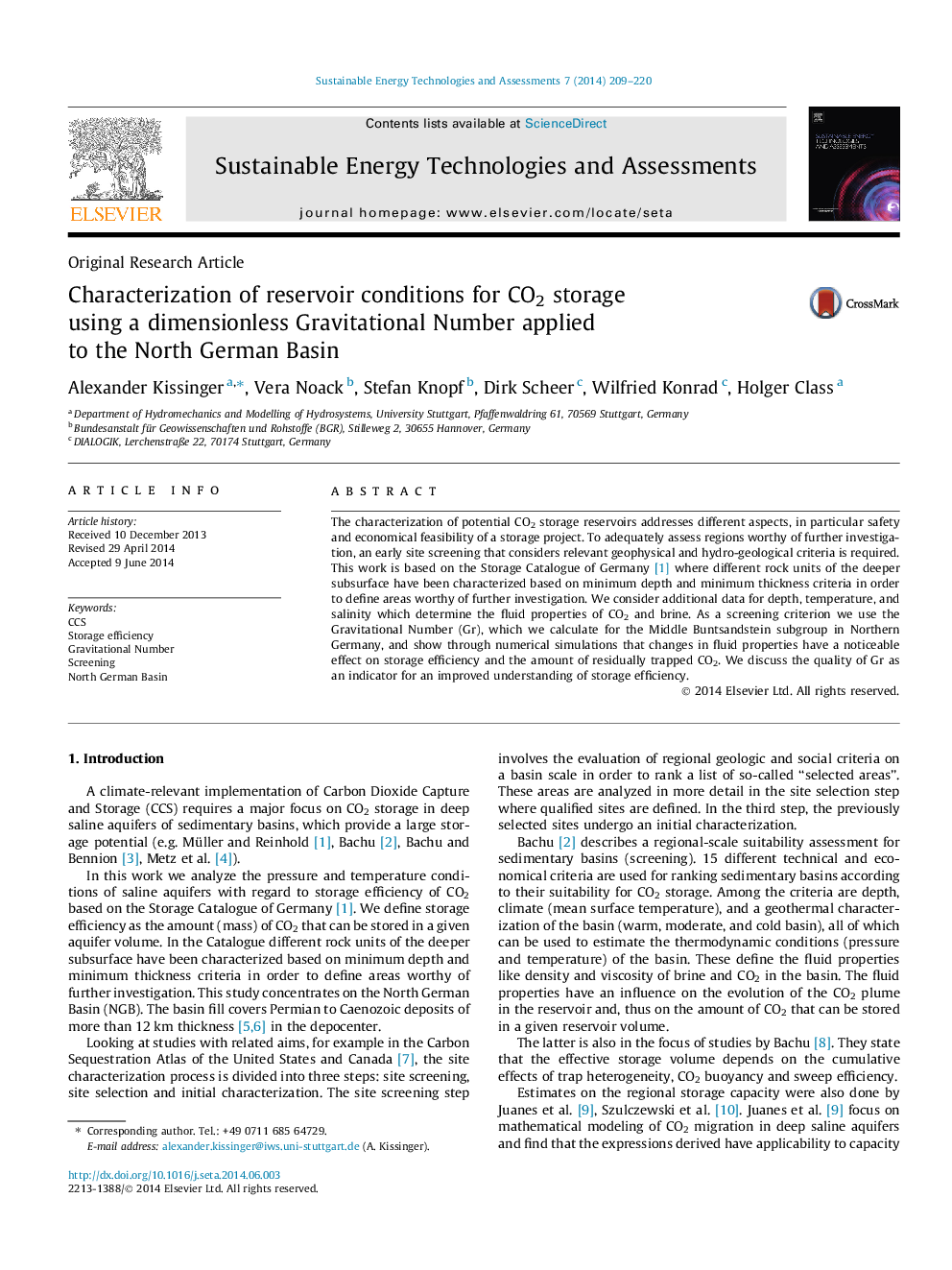| کد مقاله | کد نشریه | سال انتشار | مقاله انگلیسی | نسخه تمام متن |
|---|---|---|---|---|
| 1752654 | 1522403 | 2014 | 12 صفحه PDF | دانلود رایگان |

• We look at the gravitational number (Gr) as a screening method for storage efficiency.
• Area of interest is the Middle Buntsandstein unit in the North German Basin.
• The database we use for determining Gr consists of depth, temperature, and salinity.
• We find that these parameters have a noticeable influence on storage efficiency.
• Small values of Gr lead to higher storage efficiency and more residually trapped CO2.
The characterization of potential CO2 storage reservoirs addresses different aspects, in particular safety and economical feasibility of a storage project. To adequately assess regions worthy of further investigation, an early site screening that considers relevant geophysical and hydro-geological criteria is required. This work is based on the Storage Catalogue of Germany [1] where different rock units of the deeper subsurface have been characterized based on minimum depth and minimum thickness criteria in order to define areas worthy of further investigation. We consider additional data for depth, temperature, and salinity which determine the fluid properties of CO2 and brine. As a screening criterion we use the Gravitational Number (Gr), which we calculate for the Middle Buntsandstein subgroup in Northern Germany, and show through numerical simulations that changes in fluid properties have a noticeable effect on storage efficiency and the amount of residually trapped CO2. We discuss the quality of Gr as an indicator for an improved understanding of storage efficiency.
Journal: Sustainable Energy Technologies and Assessments - Volume 7, September 2014, Pages 209–220